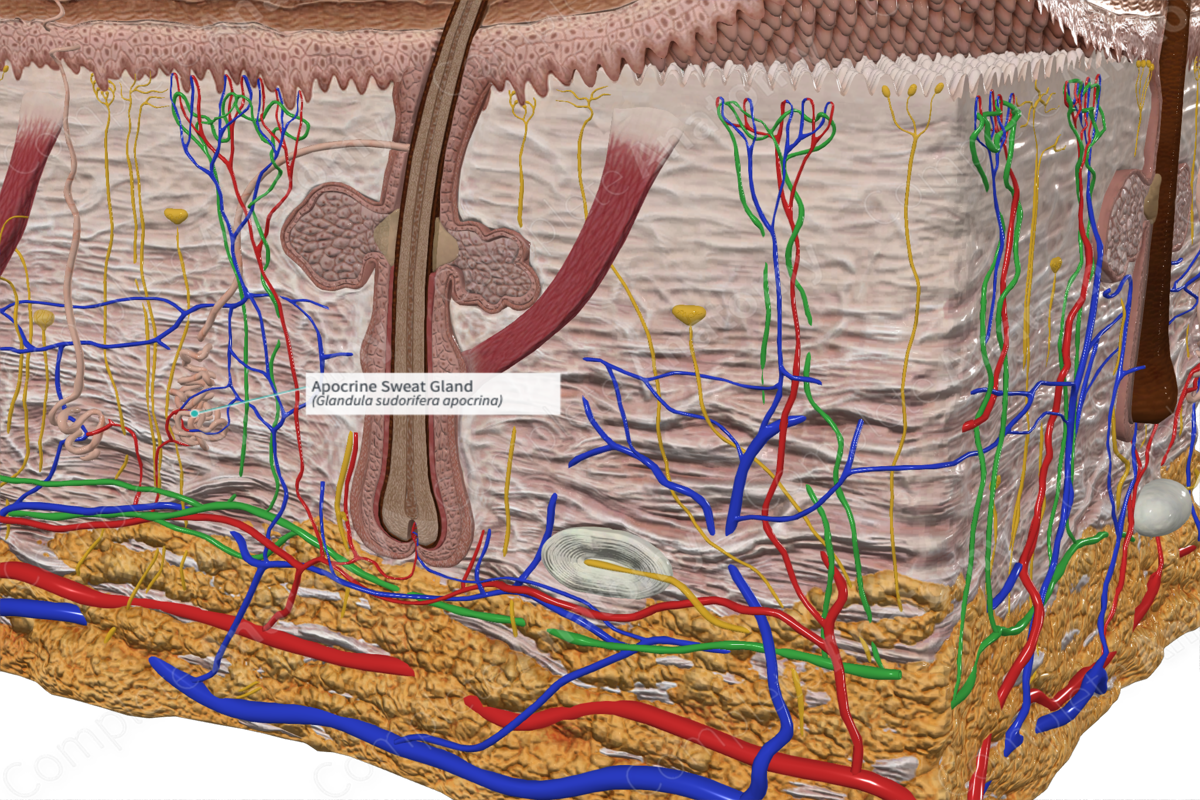
Quick Facts
An apocrine gland is a type of large, branched, specialized sweat gland that empties into the upper portion of a hair follicle instead of directly onto the skin surface; found only on certain areas of the body, such as around the anus and in the axilla; after puberty the gland produces a viscous secretion that is acted on by bacteria to produce a characteristic acrid odor. These sweat glands are misnamed as they use merocrine secretion (Dorland, 2011).
Related parts of the anatomy
Structure/Morphology
The skin hosts many types of glands, such as sweat and sebaceous glands. Two types of sweat glands exist, namely the eccrine and apocrine sweat glands, and differ from each other in their size, histology, distribution, and function.
The apocrine sweat gland develops from the hair follicle, just above the opening of the sebaceous gland. The glands secretory portion is highly coiled, tubular and widely dilated. From here, short ducts connect the secretory portion to the hair follicle where it can secrete its contents. Apocrine sweat is composed of water, electrolytes, lipids, and steroids and appears as a cloudy, viscous secretion. Apocrine glands are not found in all skin, and occur in regions such as the axilla, or arm pit, the mons pubis, the areola of the nipple, and the perianal region (Freinkel and Woodley, 2001; Lu and Fuchs, 2014).
Apocrine glands are not found in all skin, and occur in regions such as the axilla (arm pit), areola of the nipple, mons pubis, and the perianal region. These glands become functional at puberty. There are approximately 100,000 apocrine glands over the surface of the adult body (Freinkel and Woodley, 2001).
Function
Sweating is an important function that regulated body temperature. The viscous watery sweat is secreted to the surface of the epidermis. As it evaporates, it dissipates thermal energy, or heat, from the skin, hence, why humans sweat more after exercise or in hot temperatures.
References
Dorland, W. (2011) Dorland's Illustrated Medical Dictionary. 32nd edn. Philadelphia, USA: Elsevier Saunders.
Freinkel, R. K. and Woodley, D. T. (2001) The Biology of the Skin. Taylor & Francis.
Lu, C. and Fuchs, E. (2014) 'Sweat gland progenitors in development, homeostasis, and wound repair', Cold Spring Harb Perspect Med, 4(2).
